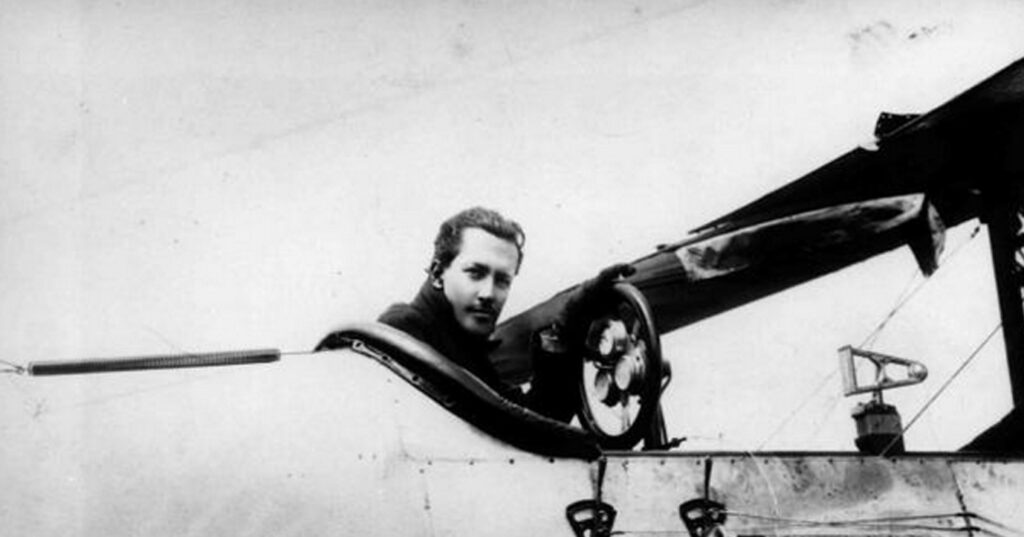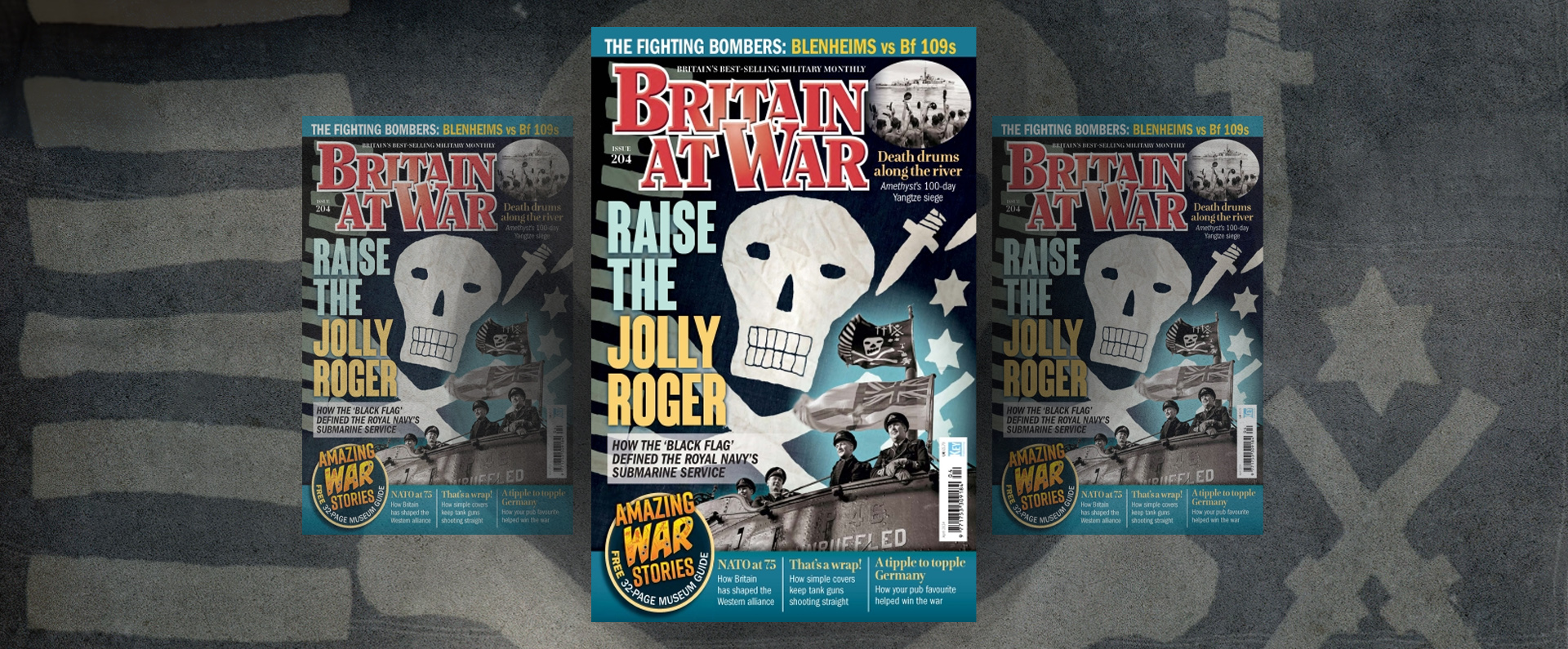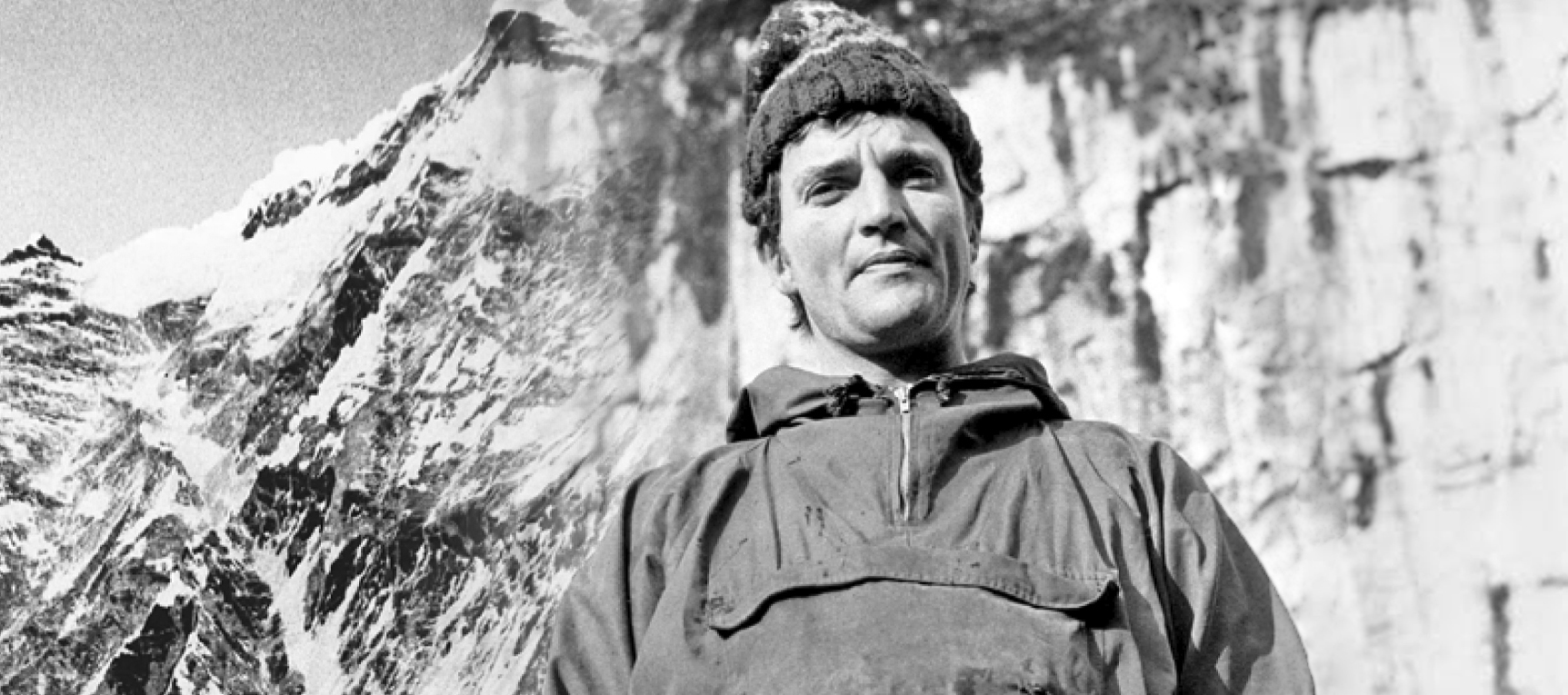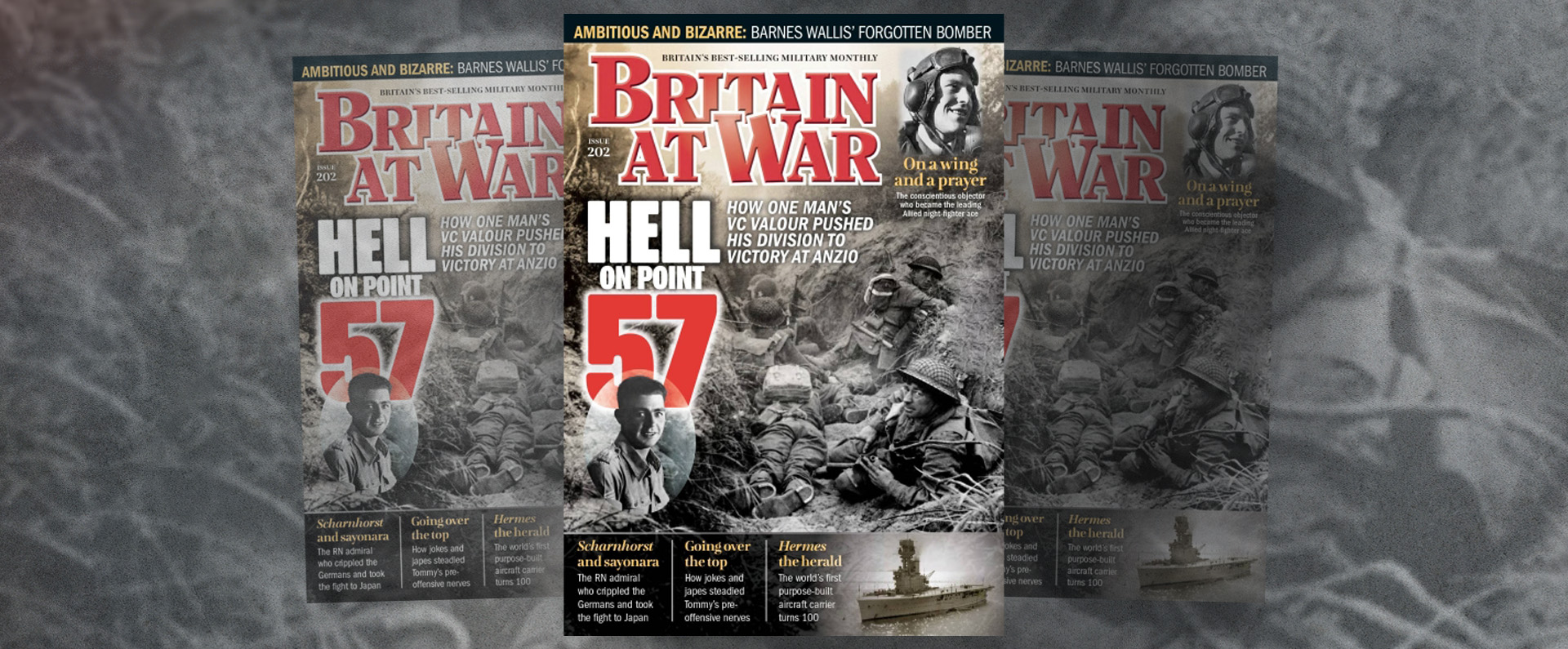
Published in the Sunday Telegraph on 01 December 2013.
William Rhodes-Moorhouse – Daring flyer who braved hail of fire to drop vital bomb
William Rhodes-Moorhouse was not just the first airman to be awarded the Victoria Cross; his act of bravery took place in circumstances that could hardly have been more dramatic or more moving. Rhodes-Moorhouse was a pioneering military pilot at a time when even flying aeroplanes for recreation was highly dangerous. It should not be forgotten that the First World War broke out only 11 years after the first powered flight by Orville and Wilbur Wright in 1903.
By 1914, aircraft had sufficiently come of age to play an important role in the Great War but the early military flyers clambered into their aircraft with only the most primitive weapons. Most small bombs were dropped from the cockpit by hand when hostilities began. It is not surprising that the life-expectancy of early pilots was short and ample courage was needed even to climb into the slow and cumbersome aircraft, let alone perform the acts of dramatic gallantry repeatedly displayed from 1914-18.
William Barnard Rhodes-Moorhouse was born in London on September 26, 1887, into a family of adventurers. His grandfather, William Barnard Rhodes, a native Yorkshireman, was one of the first Englishmen to arrive in New Zealand in July 1836. Helped by his three brothers, Rhodes amassed a fortune from farming and other business interests. This estate of £750,000 – an enormous sum at the time – was eventually inherited by his half-Maori adopted daughter Mary Ann. She married a New Zealander, Edward Moorhouse, with whom she had four children, and their family was raised in England.
The couple’s eldest son, Will, was a robust boy. He was educated at Harrow, where he developed a taste for speed and an interest in the internal combustion engine. He attended Trinity College, Cambridge, but neglected his studies because of his love of engineering and his passion for racing motorcycles and cars.
By his early twenties, Rhodes-Moorhouse was fascinated with the new sport of flying. He became an airman, attracting large crowds when he flew from Huntingdon airfield, Cambridgeshire. With a friend, James Radley, he even produced a variation of the Blériot XI aircraft – the Radley-Moorhouse monoplane. In 1911, he travelled to the United States, where he piloted a 50hp Gnome-engined Blériot to victory in many airspeed contests, earning thousands of dollars in prizes. After his return to Britain, he continued to fly competitively, ending his peacetime flying career with a record-breaking cross-Channel flight in 1912. This was shortly after he married his wife, Linda, a schoolfriend of his sister, and provided an unusual start to their honeymoon.
When war was declared, he volunteered for the Royal Flying Corps (RFC) though he had not flown for two-and-a-half years. With a shortage of experienced pilots on the Western Front, Rhodes-Moorhouse was posted to 2 Squadron at Merville, France, on March 21, 1915. His squadron flew the Blériot-Experimental (BE) 2a and 2b aircraft, designed by the Farnborough-based Royal Aircraft Factory, which were sturdy machines but with a maximum speed of just 70 mph at ground level.
Rhodes-Moorhouse flew some familiarisation sorties, but soon had his baptism of German antiaircraft fire at 7,500ft over Lille. His logbook recorded that the top centre section of his aircraft was hit by a shell on March 29. Four days later he wrote to his wife, describing the sound of anti-aircraft fire as “first a whistle, then a noise like a terrific cough”.
Poor weather meant he had few flights in the first two weeks of April, but from April 16 he was performing numerous highly dangerous missions. During one 95-minute reconnaissance, his aircraft’s wings and bracing wire were hit by shrapnel.
His service did not go unnoticed by his superiors and he was recommended for promotion to substantive lieutenant.
On April 22, 1915, the Germans unleashed their first gas attack on the Western Front and kept the initiative in battles in and around St Julien and Ypres. On April 26, the RFC was ordered to bomb the enemy’s railway network to prevent reinforcements reaching the front lines. Rhodes-Moorhouse, who had been due some much-deserved leave, was instructed to bomb the strategically vital railway off alone from Merville, having been asked to release his 100lb bomb from just below cloud level. However, after making the 35-mile flight, he dropped down to 300ft to ensure a direct hit. He was greeted with a volley of rifle and machine-gun fire, a burst of which perforated his aircraft’s fuselage and smashed into his thigh. At the same time, fragments from his own bomb ripped through the wings and tailplane.
Badly wounded and in great pain, Rhodes-Moorhouse had two options: land behind enemy lines, surrender his valuable aircraft, receive medical attention and become a prisoner of war; or try to limp back to base with his aircraft and the valuable intelligence he had gathered. Choosing the latter, he dropped a further 200ft to gain speed and again encountered heavy fire, leading to two new wounds to his hand and abdomen. Despite his appalling injuries, he managed to steer his aircraft home, crossing the Allied lines over Indian troops who later asked for details of his courageous sortie to be translated into Hindustani.
Just three days later, the daily bulletin to the troops said Rhodes-Moorhouse’s mission had been a total success and “would appear worthy to be ranked among the most heroic stories of the world’s history”.
At 4.12pm, eyewitnesses saw Rhodes-Moorhouse’s aircraft approaching. He just cleared a hedge, switched off the engine and made a perfect landing. Two officers lifted him from the battered aircraft, which had 95 bullet and shrapnel holes. He was taken to a nearby office, where he insisted on filing his report while his wounds were tended.
Rhodes-Moorhouse was then moved to a casualty clearing station, where it was discovered that a bullet had ripped his stomach to pieces. He was given painkillers and it soon became apparent that he was dying. Rhodes-Moorhouse showed his flight commander, Maurice Blake, a photograph of his wife and son, and asked him to write to them and to his mother. He said that if he was awarded a Military Cross (MC), then it should go to his wife.
After a short doze, he said: “It’s strange dying, Blake, old boy – unlike anything one has ever done before, like one’s first solo flight.” Just after 1pm on April 27, he received Holy Communion from Christopher Chavasse, chaplain at Merville, and twin brother of Capt Noel Chavasse, VC and Bar (one of only three men in history to receive the equivalent of two VCs). Then, a note arrived informing Rhodes-Moorhouse that he had been recommended for the Distinguished Service Order (DSO). At 2.25pm, with a recently delivered letter from his wife on his pillow and his friend Blake at his side, Rhodes-Moorhouse died. He was 27. In Britain, he was instantly acclaimed as a hero. The Daily Mail noted: “Such endurance is enough to make all of us ashamed of ever again complaining of any pain whatever. He was one of those who have never ‘done their bit’ till they have done the impossible.”
A squadron observer, Sholto Douglas, later Marshal of the RAF the 1st Baron Douglas of Kirtleside, wrote a letter to the pilot’s widow: “I do hope such courage will be recognised with a DSO although we all think a VC would be none too great a reward for such pluck and endurance.” But it was largely Blake’s lobbying that secured the VC, and swiftly. Rhodes-Moorhouse’s award, for “most conspicuous bravery”, was announced on May 22, 1915, less than a month after his death. At the time, Field Marshal Sir John French, the British commander, said the pilot had been responsible for “the most important bomb dropped during the war so far”.
Before his mission, Rhodes-Moorhouse had written several letters to his family, to be sent in the event of his death. One particularly touching one was to his four-month-old son Willie, in which he expressed his love and affection for his wife, with whom he stressed he had never had a “misunderstanding or quarrel”. He urged his son always to seek the advice of his mother and hoped he would be an engineer and obtain “a useful knowledge of machinery in all forms”. He also urged him to “keep up your position as a landowner and a gentleman” (the family had the 16th-century Parnham House and its estate near Beaminster, Dorset).
Then, with an affectionate farewell, William Rhodes-Moorhouse signed what he described as his “first and last letter” to his son. There was a poignant and astute postscript: “I am off on a trip from which I don’t expect to return but which I hope will shorten the War a bit. I shall probably be blown up by my own bomb or if not killed by rifle fire.”
Unusually for the times, but at his own request, Rhodes-Moorhouse’s body was returned to Britain where he was given a funeral with full military honours. Rhodes-Moorhouse’s son became a Battle of Britain pilot and served from May 1940, at Merville, France, where his father had been killed in action 25 years earlier. After claiming 12 combat victories and being awarded the DFC, Willie Rhodes-Moorhouse’s Hurricane was shot down over Kent on September 6, 1940. The body of the officer, who was 25, was recovered and his ashes were later interred beside his father at the family’s Parnham estate.
I bought William Rhodes-Moorhouse’s gallantry and service medals at Sotheby’s in 1990 and they are on display at the Imperial War Museum in London. Also on display is the pin from the vital 100lb bomb that Rhodes-Moorhouse dropped.
Download a PDF of the original Sunday Telegraph supplement
For more information, visit:
LordAshcroftOnBravery.com


